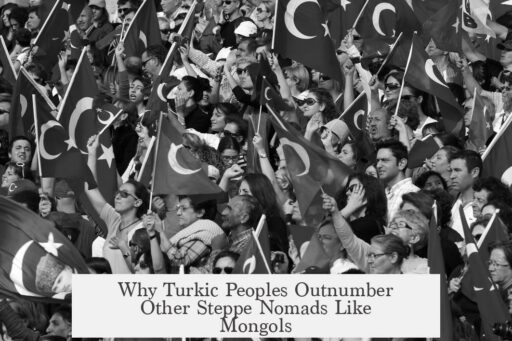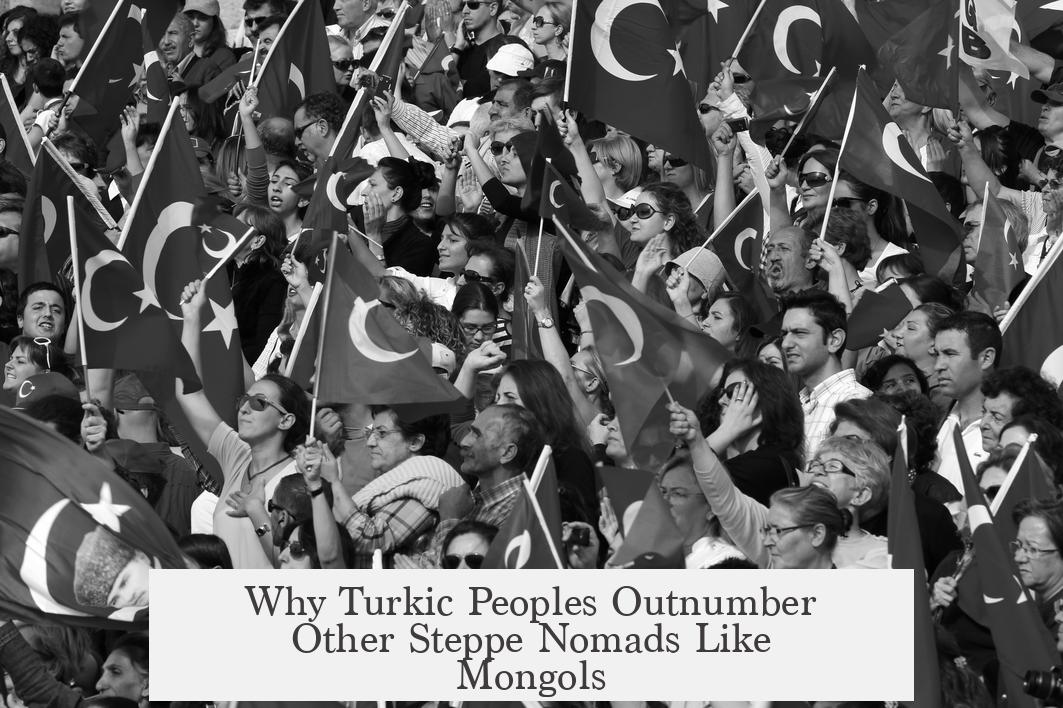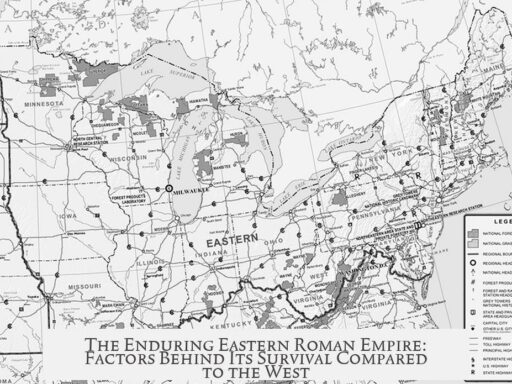There are many more Turkic peoples today compared to other ethnicities descended from Steppe nomads, especially those of Mongol origin, primarily due to differences in migration patterns, demographic impacts of colonization, cultural assimilation, and historical statecraft.
Turkic migrations involved large groups of both men and women moving from one region to another. This complete migration enabled the establishment of enduring ruling populations. Such groups maintained their language and culture as they integrated with the local populations. This differs markedly from many Mongol or Norse expansions, which were often male-dominated.
For example, Norse settlers did not bring significant numbers of women to Normandy or the Danelaw. Over time, Norse languages disappeared as settlers assimilated, adopting French or English instead. Similarly, the Mongol colonizing forces rarely established large, mixed-gender populations outside limited areas such as near the Caspian Sea, where the Kalmyk people remain. Genetic evidence from mitochondrial DNA shows the presence of women with the Mongol colonizers only in these restricted regions.
In contrast, Turkic groups formed sustainable ruling classes in conquered territories. The Avars’ example in Hungary illustrates this. As a ruling elite consisting of both men and women, they comprised roughly one-third of the Hungarian population over time. Their political dominance helped displace the local language and impose their own. This process explains how Turkic languages and peoples expanded and took root in broad areas.
Another important factor is the cultural similarity between Turkic and Mongolic peoples. Although they spoke languages from different families, these groups shared a continuum of steppe culture and political tradition. Their common practices in governance and coalition-building allowed Turkic communities to absorb or assimilate Mongol populations more easily.
The situation during the Mongol Empire exemplifies this dynamic. Central Asia was already majority Turkic-speaking when the Mongol Empire formed. Turkic speakers played a prominent role in the empire’s administration and society from the beginning. Mongol migrants moving west were relatively few, making up a minority among larger Turkic populations. Cultural parallels and preexisting Turkic dominance encouraged Mongol assimilation into Turkic identity over time.
Therefore, Mongol diaspora populations rarely formed lasting, large ethnic identities independent of Turkic or other local groups. Turkic peoples, by contrast, expanded through genuine migrations that established mixed-gender communities, aided by ruling status and cultural cohesion.
Migratory patterns and gender balance prove critical in explaining why Turkic ethnicity survived and thrived. Settlements involving both men and women promote language persistence among descendants. Male-only colonial ventures often fail to maintain the original language or identity among native populations. The Spanish conquest of the Caribbean stands as a rare exception, where male-only colonists imposed language and culture through conquest and disease-driven genocide.
Another point is the difficulty in mapping pre-modern political borders and ethnic populations accurately. Steppe nomads were often mobile, forming fluid coalitions rather than fixed states. Political borders did not rigidly define ethnic territories, complicating historical population studies. Understanding these nuances helps interpret why Turkic peoples, with their more stable migratory settlements, resulted in more distinct ethnic groups today.
| Factor | Turkic Peoples | Mongol Peoples |
|---|---|---|
| Migration Pattern | Men and women migrated together | Mostly men migrated |
| Demographic Impact | Strong ruling minority, language spread to locals | Minority colonization, local languages often persisted |
| Cultural Assimilation | Shared cultural continuum with steppe traditions | Assimilated into Turkic or other local cultures readily |
| Political Presence | Established stable states and ruling classes | Predominantly mobile conquests, less permanent states |
Culturally and politically, Turkic peoples set a foundation that encouraged long-term ethnic persistence. They spread over Central Asia, Eastern Europe, and Siberia, leaving descendants today across many distinct Turkic ethnic groups. Mongol descendants, in contrast, often assimilated into these populations or remained minorities.
- Turkic migrations included both men and women, enabling cultural and linguistic continuity.
- Turkic rulers formed stable political elites, displacing local languages effectively.
- Mongol expansions were often male-biased and limited in permanent settlement.
- Shared cultural traditions eased assimilation of Mongols into Turkic populations.
- Existing Turkic majorities within the Mongol Empire helped preserve Turkic identity.
- Pre-modern political boundaries were fluid, complicating ethnic delineation.
Why Are There So Many More Turkic Peoples Compared to Other Steppe Nomads, Especially the Mongols?
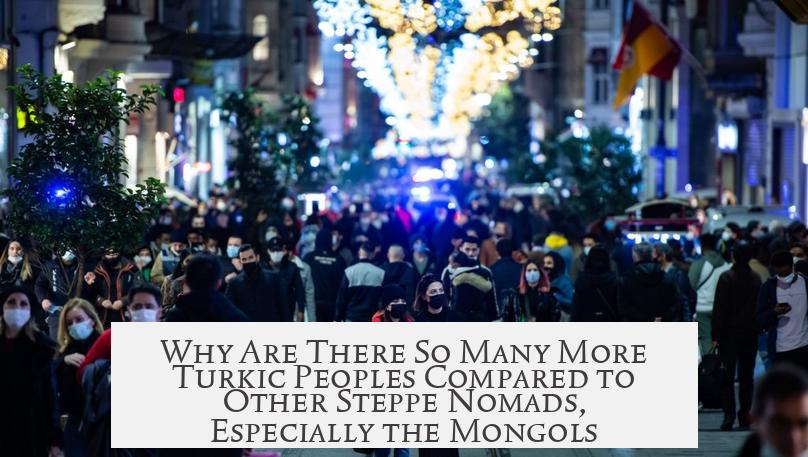
Here’s the big answer upfront: Turkic peoples flourish more widely than Mongols because Turkic migrations involved both men and women, creating lasting ruling populations that preserved their language and culture. In contrast, Mongol expansion often involved mostly men, limiting cultural endurance and assimilation. Now, let’s unpack that together with real stories from history.
Ever wonder why Turkic languages are spoken from Turkey all the way across Central Asia to Siberia, while Mongol influence feels more localized? The answer lies deep in migration, demography, and cultural blending.
The Migration Mix: Men and Women Matter
Imagine packing your bags for a fresh start and moving with your whole family—not just the guys. That’s the Turkic story. Unlike many nomadic groups, Turkic expansions didn’t just send out armies of men. Whole families moved, settled, and rooted themselves in new lands.
Historical migrations of Turkic peoples resemble those of the Avars—a steppe group whose men and women settled in Hungary. Because both sexes were involved, the Avars established a ruling population. Their genetic and cultural imprint remained strong enough to displace local languages.
By contrast, many historical colonizations were strictly male affairs. The Norse, for example, sailed to places like Normandy, Dublin, and Danelaw, but brought almost no women. What happened? Their languages didn’t survive; they merged into French, Irish, or English. Without women to nurture language and culture at home, colonization often means linguistic extinction.
Mongols? Fewer Women, Less Language Persistence
Mongol conquests thrived thanks to military prowess but faltered at cultural continuity in many places. When Mongols moved westward, they largely had fewer women in the mix. The result? While Mongol rule was famous and vast, their lasting cultural footprint shrank.
The only significant exception is the Kalmyks, a group near the Caspian Sea, who included both Mongol men and women in their migration. Genetic studies even show mitochondrial DNA consistent with female descendants. This supports the idea that when entire families migrate, language and culture endure.
Shared Steppe Cultures Blur the Lines
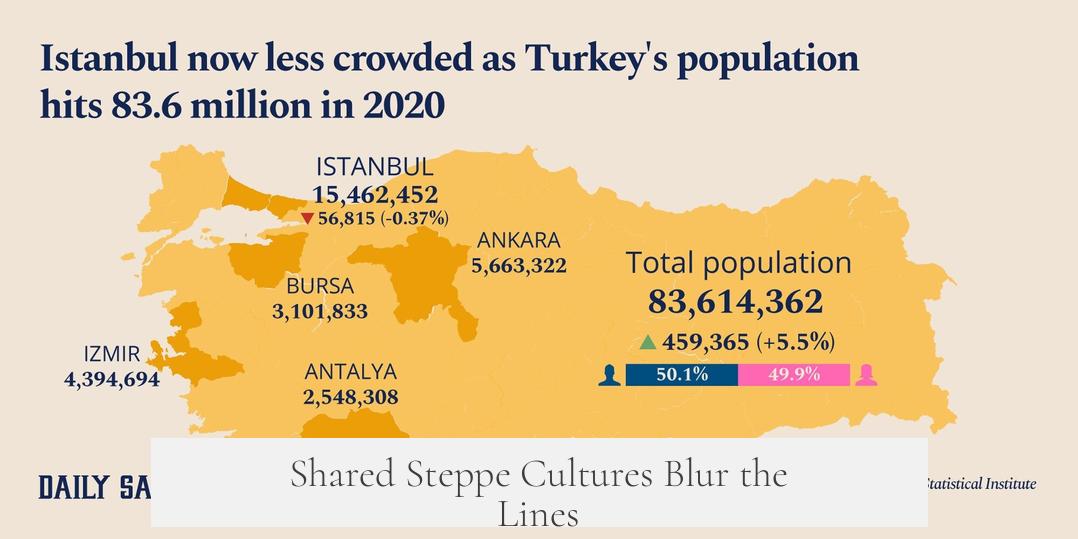
Here’s a twist: Turkic and Mongolic peoples share a cultural continuum. Their traditions, governance styles, and nomadic lifestyles overlap heavily, even if their languages differ. So, when the Mongol Empire rose, it ruled over many Turkic-speaking populations.
In fact, Central Asia was already majority Turkic-speaking before the Mongols swept in. Turkic peoples formed a big part of the Mongol administration. Mongols, a numerical minority going west, found it easier to assimilate into Turkic cultures than the other way around. It’s like moving into a neighborhood where your new neighbors speak your language and share your customs. Assimilation isn’t just possible; it’s likely.
Why Does This All Matter?
This explains why Turkic peoples remain a vibrant, large ethnolinguistic group spread across Eurasia. They didn’t just conquer; they settled with families, created ruling elites, and nurtured their language at home. Meanwhile, Mongols, despite their fearsome conquests, left a smaller genetic and linguistic legacy beyond their core regions.
A Quick Word on Exceptions: When Men Alone Succeed
Some exceptions exist. The Spanish conquest of the Caribbean, for instance, involved male-only colonists who imposed their language through brutal genocide and disease spread. This unique, tragic scenario contrasts starkly with the Turkic story and shows how only massive upheaval and demographic collapse could force language persistence without accompanying women settlers.
Understanding Pre-Modern Borders
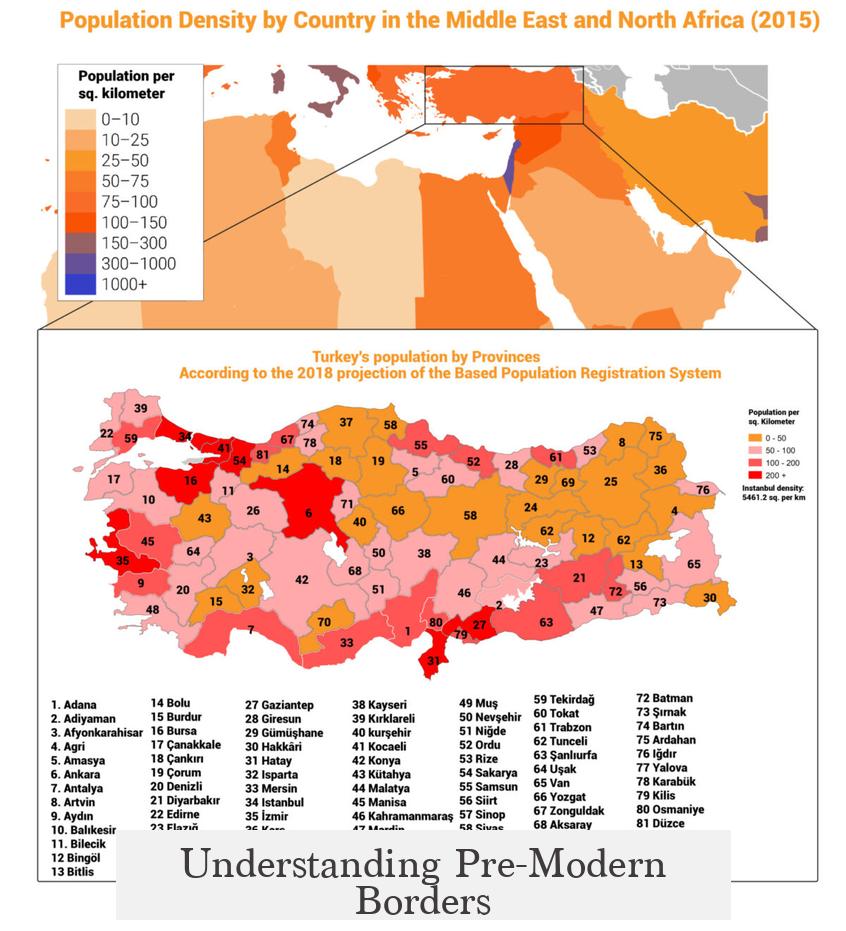
Studying these steppe peoples reveals challenges with early maps showing political borders. When nomads roamed vast territories without fixed boundaries, how do we accurately depict their domains? The “Mongol invasion of Hungary” is just one example that makes scholars rethink rigid border lines on maps of the era.
It reminds us that ethnic and linguistic realities shaped by migrations don’t fit neatly into boxes or lines. People moved fluidly, mingled cultures, and reshaped societies. Turkic peoples benefited from this fluid migration and cultural mixing far more than many of their steppe cousins.
So, What’s the Takeaway for Today?
- Migration involving both men and women sustains language and culture. Single-sex migrations rarely do.
- Establishing ruling populations—like the Avars or Turkic tribes—ensures cultural persistence and language dominance.
- Shared cultural traditions across Turkic and Mongolic peoples meant Mongols could easily assimilate, limiting their long-term cultural footprint in Turkic lands.
- Historical events, like the Spanish male-only colonization, are rare exceptions where language survives without settlers of both genders.
- Pre-modern migrations challenge our assumptions about fixed borders and ethnic homelands.
Next time you hear about the vast Turkic world—from the bustling streets of Istanbul to the steppes of Kazakhstan—remember, it’s more than just conquest. It’s about families migrating, languages growing, and cultures mingling over centuries. The Turkic peoples didn’t just ride through the steppes—they settled, ruled, and thrived. So, would you bet on family migration or soldier-only conquest to preserve a language? History picks the family every time.
